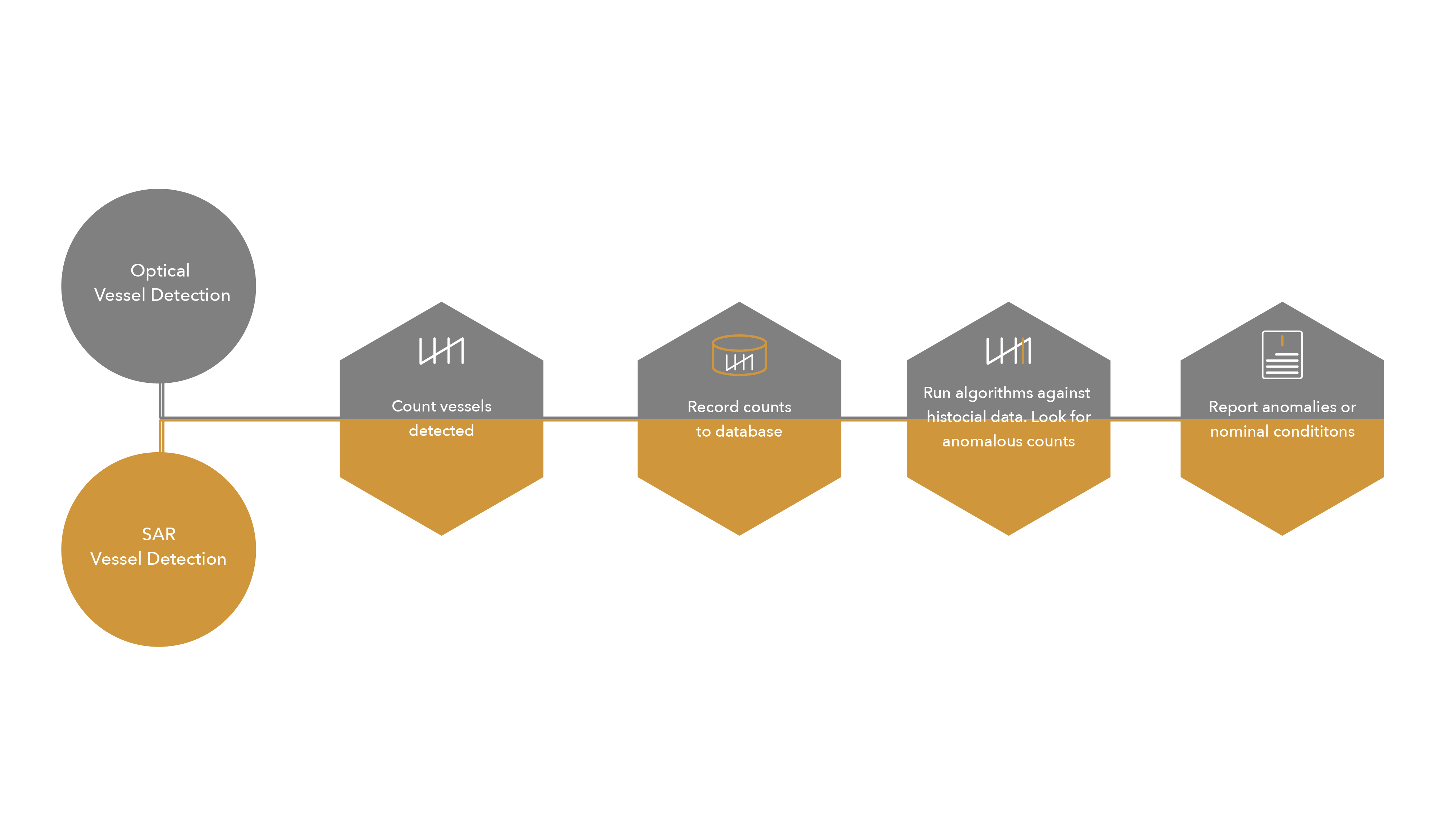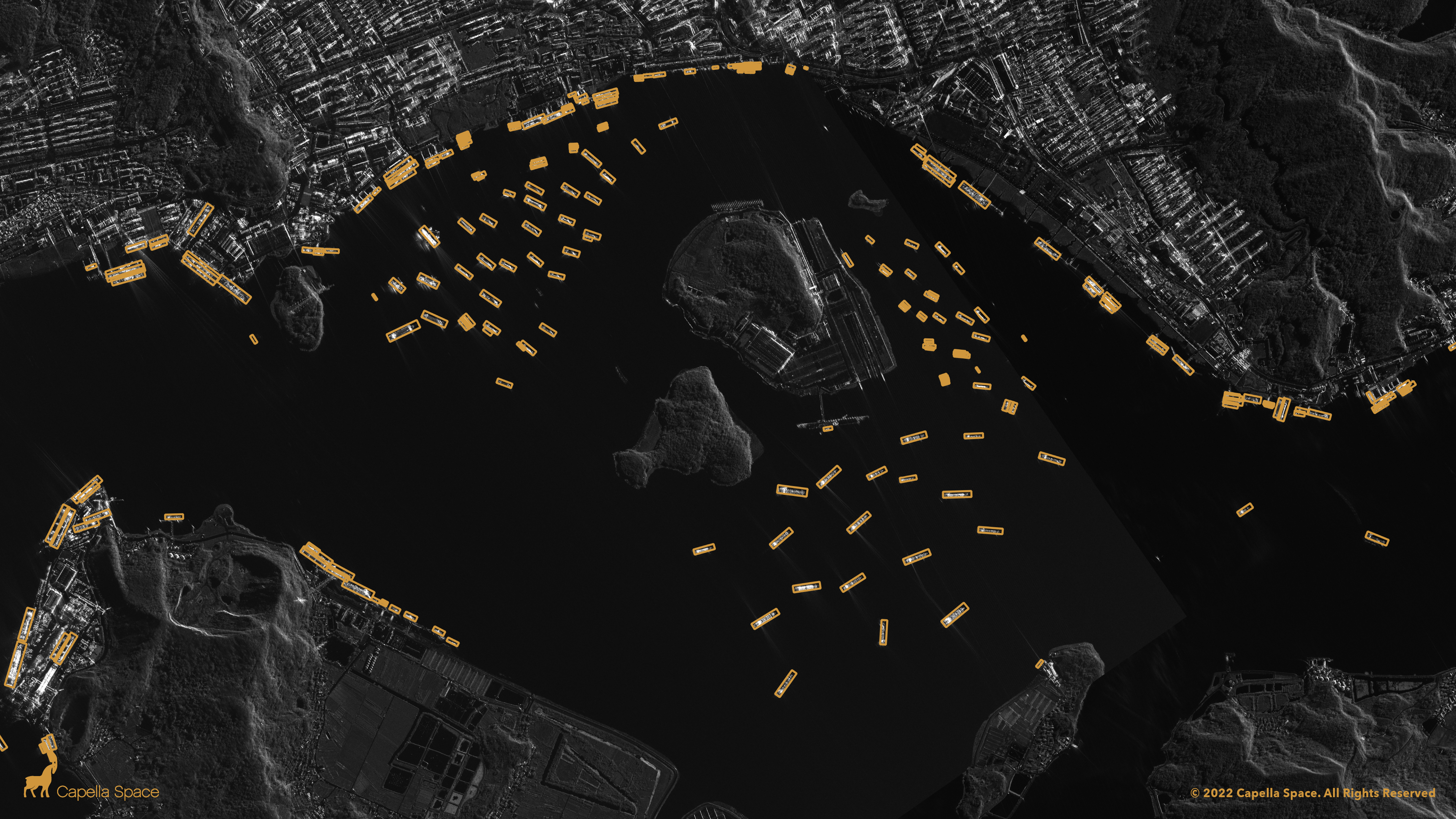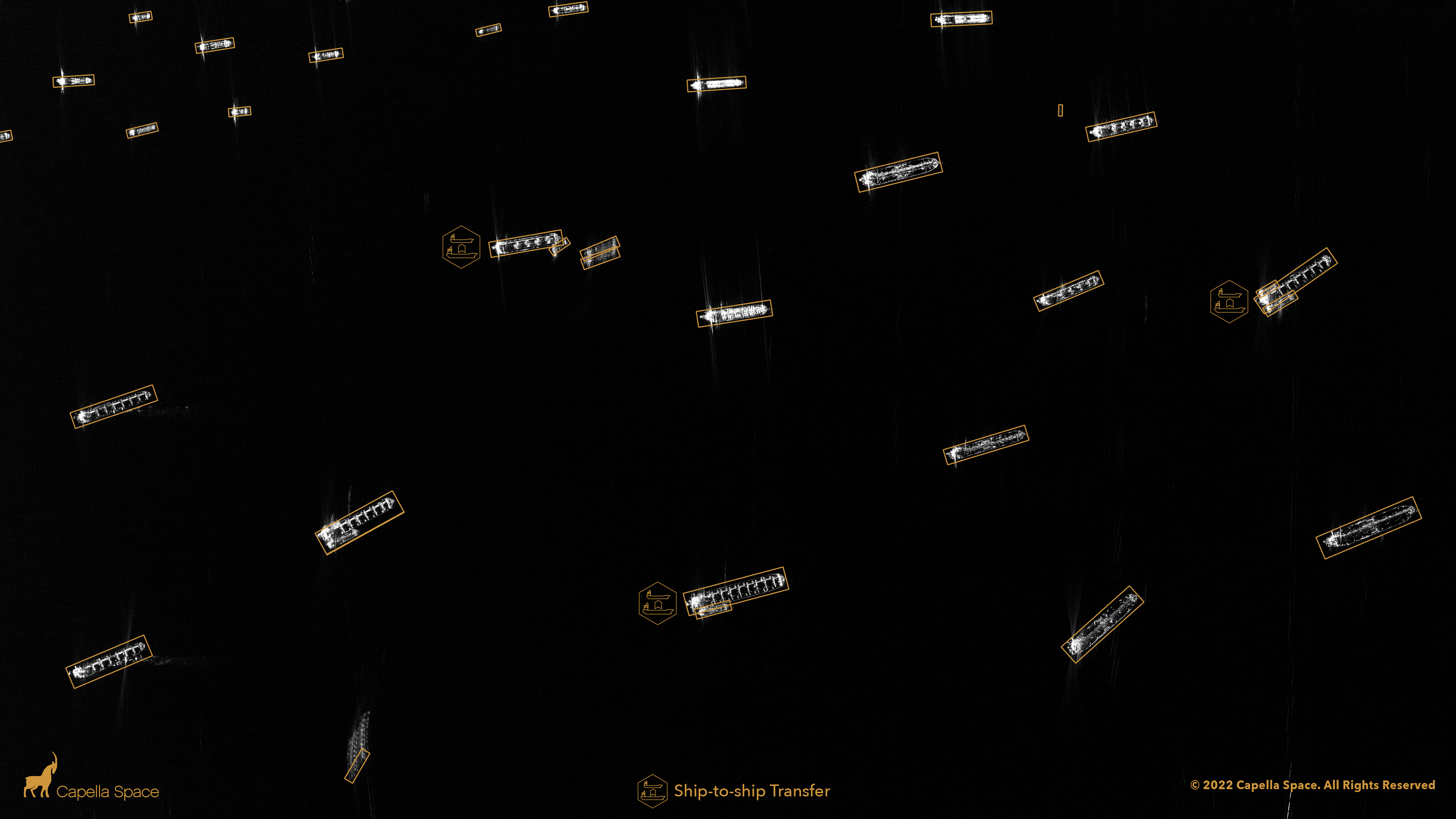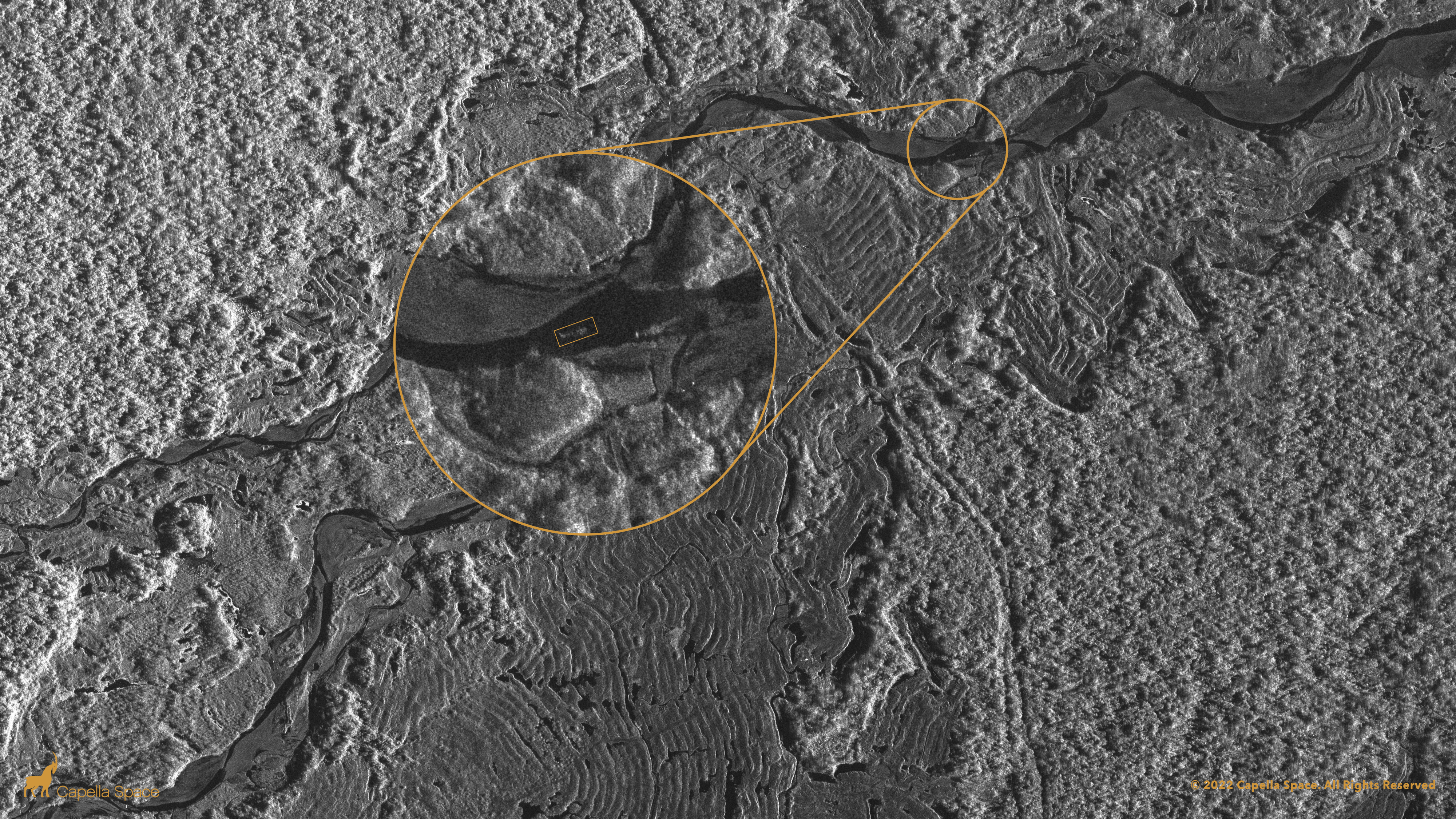In April 2022, Capella Space introduced three new analytics products within its self-serve tasking console, enabling customers to automatically pull insights from Capella’s high-resolution synthetic aperture radar (SAR) imagery. Since launching those products, customers worldwide have been able to use Capella’s technology to solve critical problems across an array of industries.
As commercial SAR imagery becomes increasingly available, specialized data analysis makes this imagery more useful and accessible to new audiences. In this blog, we’ll do a deep dive on Capella’s Vessel Detection offering, which uses machine learning to detect and highlight maritime vessels within an image. For those who are newer to the technology, this automated feature allows users to quickly identify and understand what these objects look like in SAR. For more experienced SAR analysts, automating insights enables them to scale their productivity.
Why is SAR-based vessel detection important?
SAR has two distinct advantages over optical imagery:
- It can capture imagery regardless of weather patterns or cloud cover.
- It can see at night.
These capabilities are critical for detecting illicit and illegal activities, since these operations are often carried out under the cover of darkness. SAR eliminates the ability for bad actors to hide and provides new tools for detection strategies.
For example, maritime locations like ports and anchorages are often subject to cloud cover, haze, and other weather phenomena that make optical collection and monitoring challenging. In fact, nearly half of optical imagery collected is discarded for these reasons. This puts reliable imagery collection at risk during critical times and makes regular site monitoring inconsistent. Spotting trends such as increases or decreases in the number of vessels at a port requires reliable data collection. If there are gaps in the data, there are gaps in the knowledge.
Incorporating SAR-based vessel detection
Capella’s Vessel Detection automatically locates maritime vessels within a given SAR image and highlights each vessel with a visual bounding box to provide a starting point for mission-specific activities and more complex analytics. Users benefit from automated vessel detection to identify ships and integrate 24-hour, weather-independent information into their workflows.
Manual “human-in-the-loop” inspection of SAR imagery
Manually counting vessels can be tedious and fatiguing, particularly for analysts unfamiliar with SAR. Capella’s Vessel Detection offering enables users to easily count vessels as well as filter and sort them by size, allowing users to shift focus to higher-order analysis, where human attention is more critical. Analysts can also be more productive by monitoring multiple sites while performing more in-depth and diligent reporting.
Integrating SAR-based vessel detection into existing analytic pipelines
The maritime domain awareness market already offers several services, such as dark vessel detection, illicit and illegal activity monitoring, and shipping port congestion, among others. But when analytics depend solely on optical imagery, it’s difficult to get the full picture on a consistent basis. Adding SAR-based vessel detection as a data input to automated pipelines closes the gap, removing cloud-cover restrictions and extending capabilities to all hours of the day and night. Figure 1 illustrates the concept of adding SAR-based vessel detection as an additional input.

The diagram above demonstrates a notional example for counting vessels and recording the results in a database to spot trends and anomalies over time. However, this technique can be used in any situation where vessel locations are required as input.
Capella’s model for SAR-based object extraction
Capella’s approach to vessel detection offers an enrichment to SAR imagery, providing an additional level of value, and making it simple to incorporate into any tasking workflow. There is no separate service or system to learn, you simply check a box to add Vessel Detection to any Capella SAR order. When the order is processed, Vessel Detection is applied to the entire SAR image to provide a companion product, which is a GeoJSON file containing the oriented bounding boxes and metadata for each detection.
Capella’s Vessel Detection offering is available through an API as well, making it easy to integrate into automated tasking and collection systems and to feed into automated pipelines.
Ready to try SAR-based vessel detection?
The Capella Space Vessel Detection offering provides a layer of enrichment for maritime locations, helping to reduce tedious ship counting and quickly integrating SAR data into existing workflows.
Machine learning analytics require lots of data. Capella Space has access to large amounts of SAR data and has developed rigorous processes for collecting, labeling, and ground-truthing these training datasets. Through these processes, Capella can develop machine-learning models, leveraging thousands of images across the globe and hundreds of thousands of identified vessels to support multiple imaging modes. This capability is available today and is as simple as checking a box when tasking maritime locations.
Check out our analytics page to learn more about Capella’s Vessel Detection product as well as our other offerings. You can also contact us directly to inquire about sample products.
Want to dive deeper? Watch our Introduction to Vessel Detection webinar.




